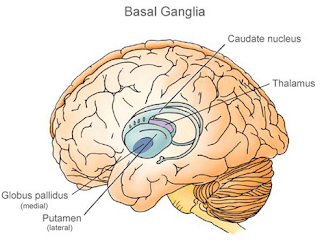Cerebral palsy can't be cured, but chinese medicine treatment will often improve a child's capabilities.
2015年7月5日星期日
Different Types Of Cerebral Palsy
Athetoid CP affects a kid's ability to control the muscles of the body. This means that the arms or legs that are affected by athetoid CP may flutter and move suddenly. A kid with ataxic CP has problems with balance and coordination.
A kid with CP can have a mild case or a more severe case — it really depends on how much of the brain is affected and which parts of the body that section of the brain controls. If both arms and both legs are affected, a kid might need to use a wheelchair. If only the legs are affected, a kid might walk in an unsteady way or have to wear braces or use crutches. If the part of the brain that controls speech is affected, a kid with CP might have trouble talking clearly. Another kid with CP might not be able to speak at all.
No one knows for sure what causes most cases of cerebral palsy. For some babies, injuries to the brain during pregnancy or soon after birth may cause CP. Children most at risk of developing CP are small, premature babies (babies who are born many weeks before they were supposed to be born) and babies who need to be on a ventilator (a machine to help with breathing) for several weeks or longer. But for most kids with CP, the problem in the brain occurs before birth and doctors don't know why.
Spastic cerebral palsy In this form of cerebral palsy, which affects 70 to 80 percent of patients, the muscles are stiffly and permanently contracted. Doctors will often describe which type of spastic cerebral palsy a patient has based on which limbs are affected, i.e spastic diplegia (both legs) or left hemi-paresis (the left side of the body). The names given to these types combine a Latin description of affected limbs with the term plegia or paresis, meaning paralyzed or weak. In some cases, spastic cerebral palsy follows a period of poor muscle tone (hypotonia) in the young infant.
Athetoid, or dyskinetic cerebral palsy. This form of cerebral palsy is characterized by uncontrolled, slow, writhing movements. These abnormal movements usually affect the hands, feet, arms, or legs and, in some cases, the muscles of the face and tongue, causing grimacing or drooling. The movements often increase during periods of emotional stress and disappear during sleep. Patients may also have problems coordinating the muscle movements needed for speech, a condition known as dysarthria. Athetoid cerebral palsy affects about 10 to 20 percent of patients.
Ataxic cerebral palsy. This rare form affects the sense of balance and depth perception. Affected persons often have poor coordination; walk unsteadily with a wide-based gait, placing their feet unusually far apart; and experience difficulty when attempting quick or precise movements, such as writing or buttoning a shirt. They may also have intention tremor. In this form of tremor, beginning a voluntary movement, such as reaching for a book, causes a trembling that affects the body part being used and that worsens as the individual gets nearer to the desired object. The ataxic form affects an estimated 5 to 10 percent of cerebral palsy patients.
Mixed forms. It is not unusual for patients to have symptoms of more than one of the previous three forms. The most common mixed form includes spasticity and athetoid movements but other combinations are also possible.
订阅:
博文评论 (Atom)


没有评论:
发表评论